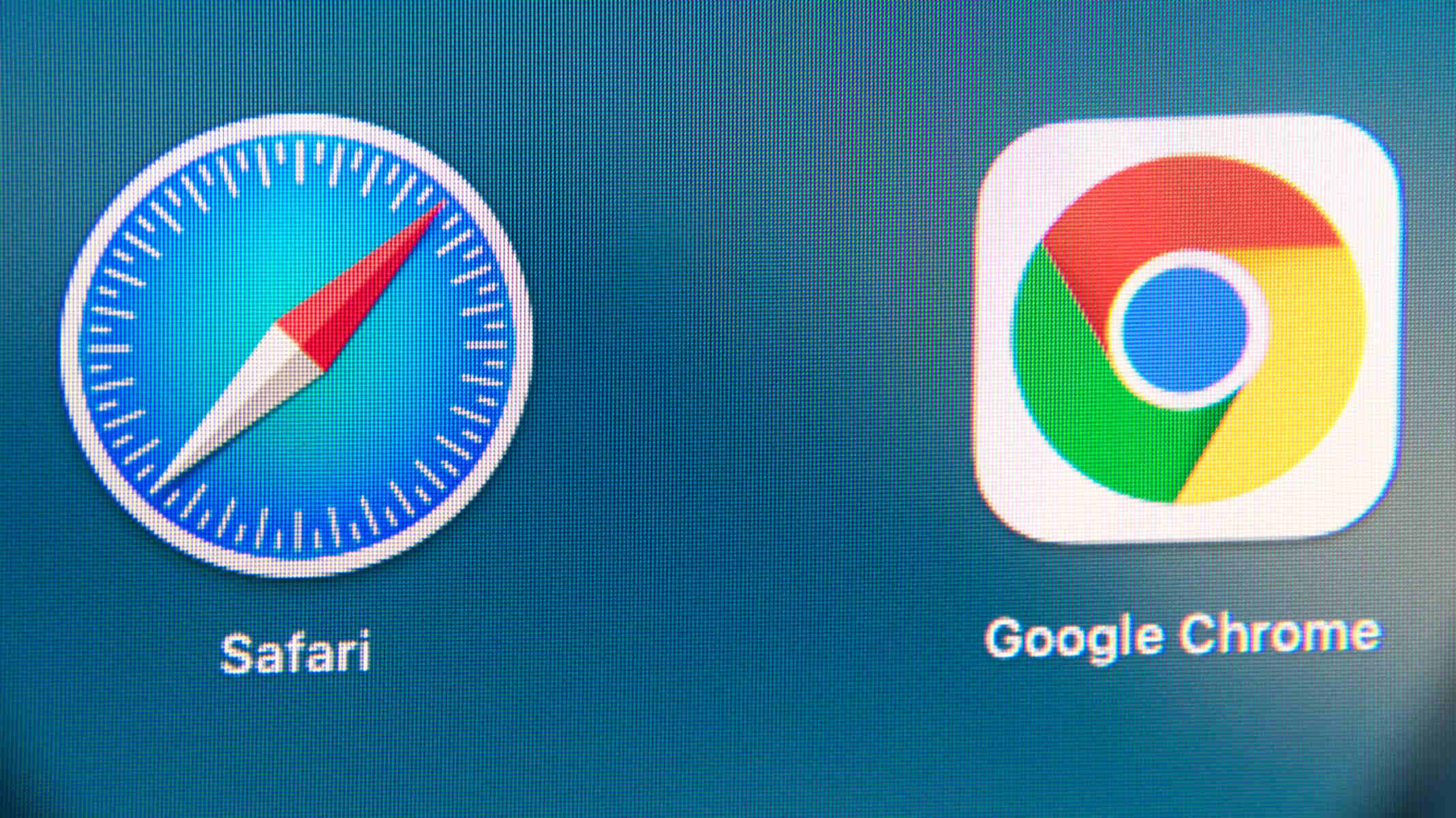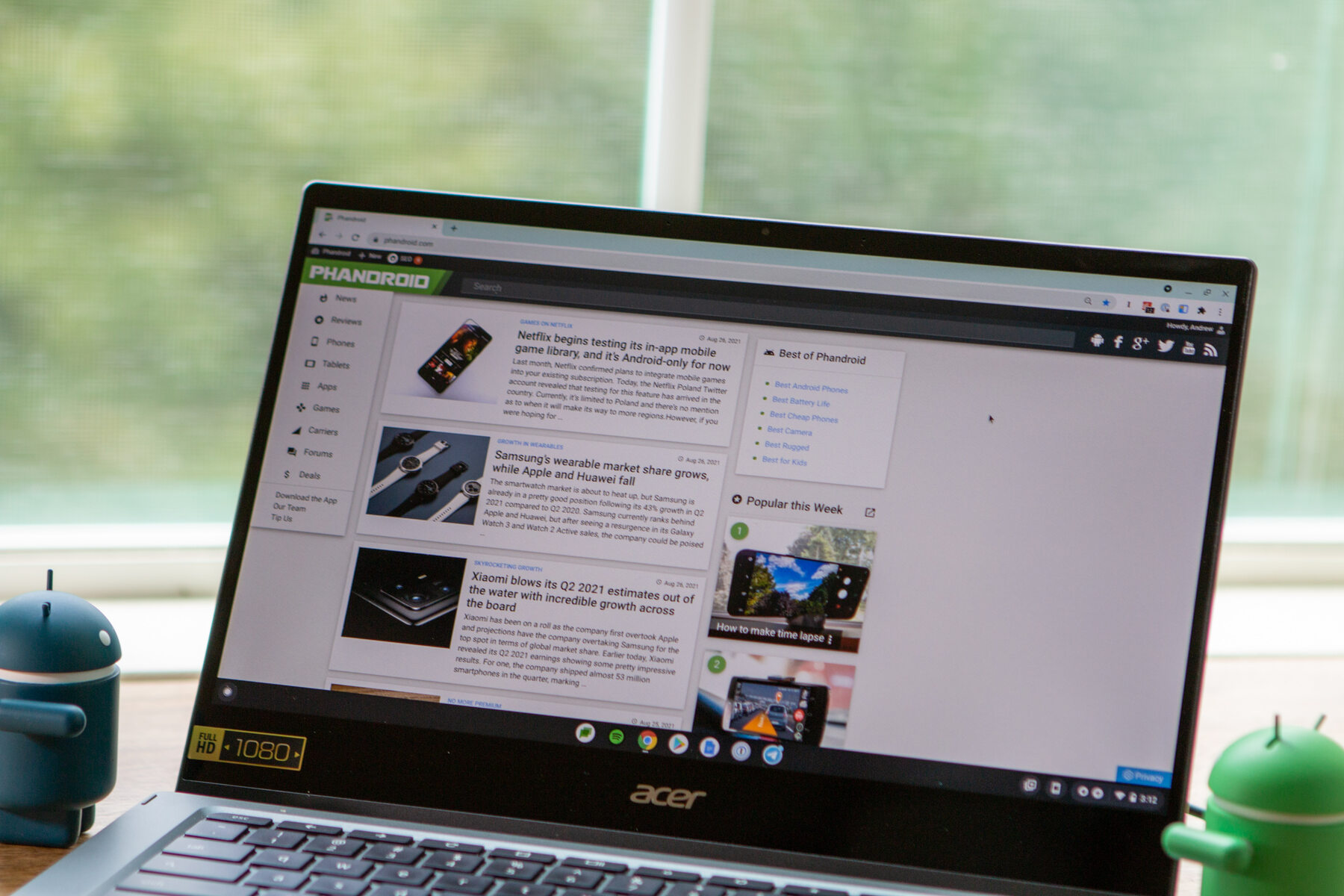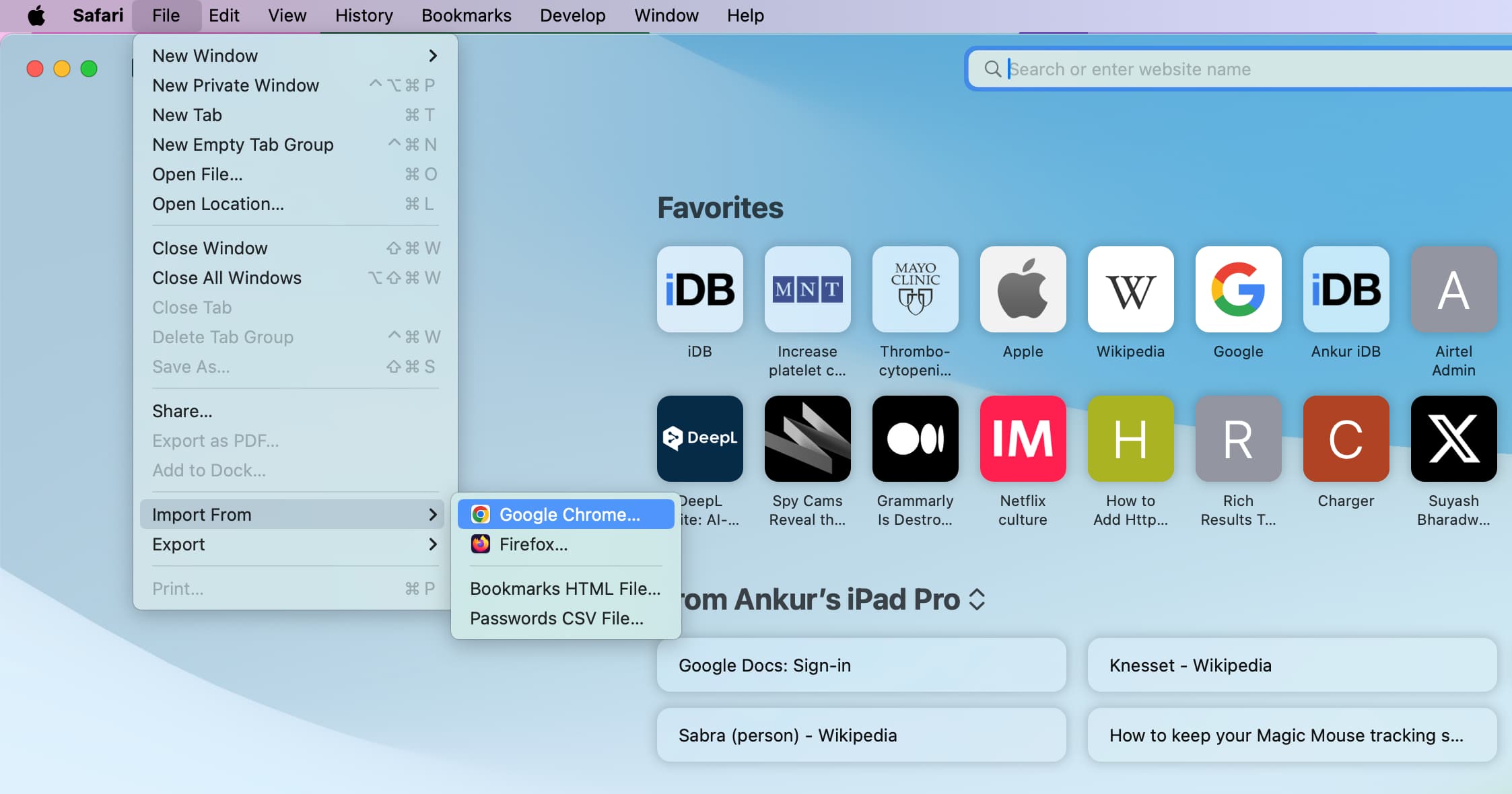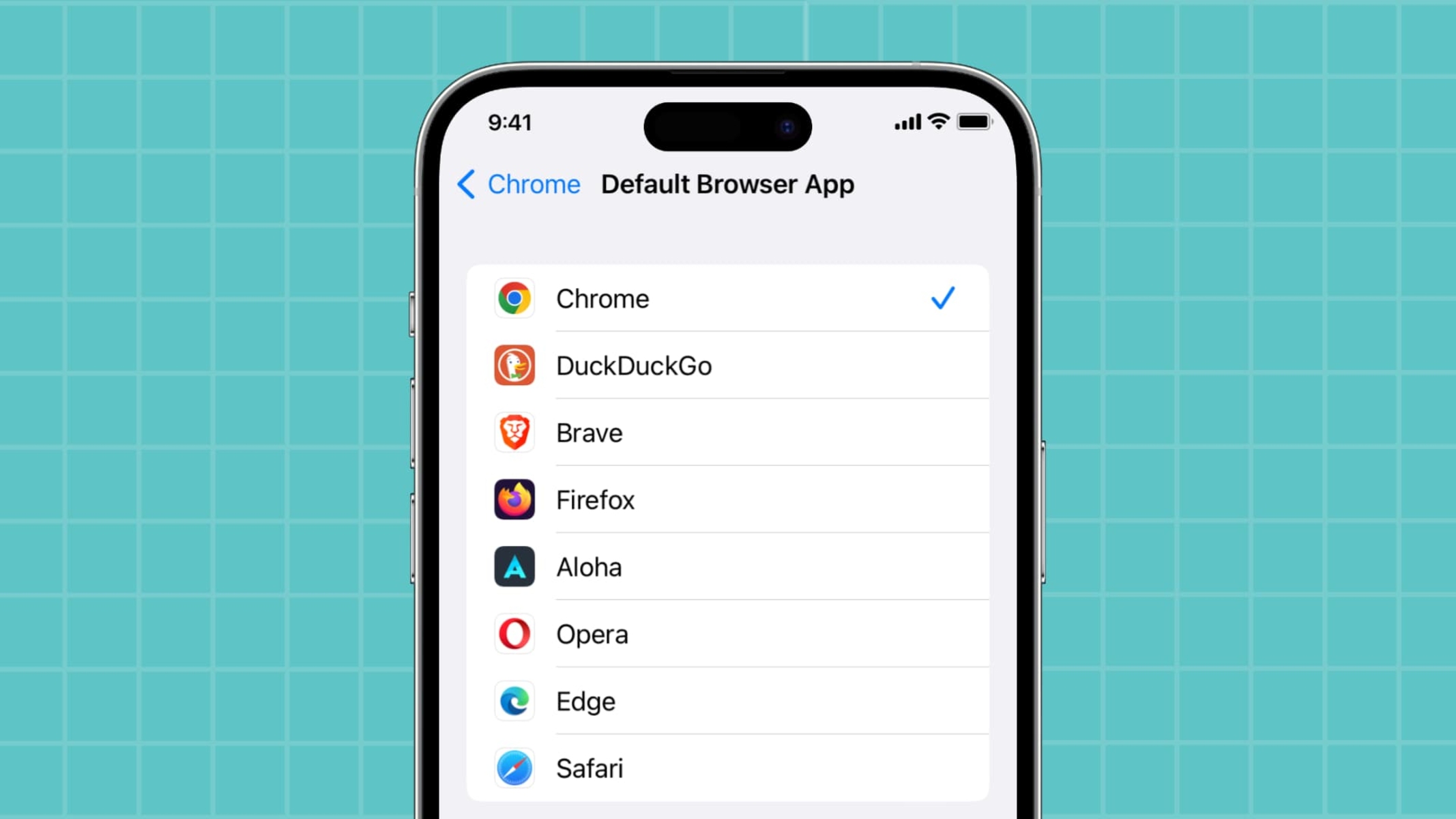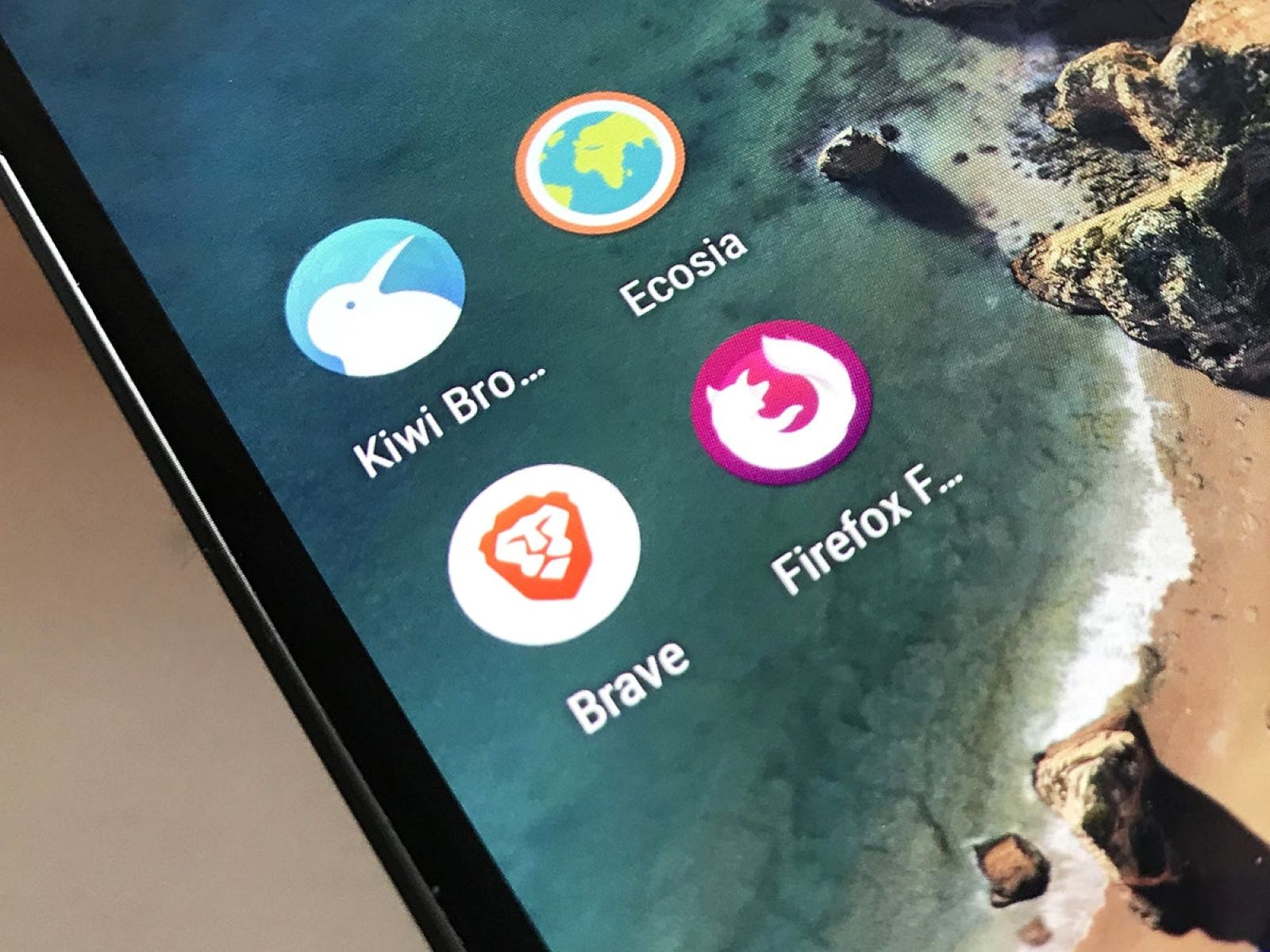Introduction
In today's digital age, web browsers have become an integral part of our daily lives. Whether it's for work, entertainment, or staying connected, we rely on browsers to navigate the vast landscape of the internet. Among the myriad of browsers available, Google Chrome and Apple's Safari stand out as popular choices for users across the globe. Each browser offers its own set of features and functionalities, catering to the diverse needs of users.
However, many individuals find themselves using both Chrome and Safari, either due to personal preference or professional requirements. In such cases, the ability to seamlessly sync data and settings between these two browsers becomes incredibly valuable. This synchronization ensures a consistent browsing experience across different devices and platforms, allowing users to access their bookmarks, history, passwords, and extensions effortlessly.
In this comprehensive guide, we will delve into the intricacies of syncing Chrome with Safari, providing step-by-step instructions and valuable insights to streamline the process. Whether you're a tech-savvy enthusiast or a casual user, mastering the art of browser synchronization can significantly enhance your digital workflow and productivity. So, let's embark on this journey to unlock the full potential of Chrome and Safari by harmonizing their functionalities and data synchronization.
Setting Up Chrome and Safari
To begin the synchronization process between Chrome and Safari, it is essential to ensure that both browsers are set up correctly on the respective devices. Here's a detailed guide to setting up Chrome and Safari for seamless synchronization:
Chrome Setup:
-
Install Chrome: If Chrome is not already installed on your device, head to the official Google Chrome website and download the browser. Follow the on-screen instructions to complete the installation process.
-
Sign in to Chrome: Launch Chrome and sign in to your Google account. If you don't have a Google account, you can create one easily. Signing in to Chrome is crucial as it enables the synchronization of your browsing data across devices.
-
Customize Settings: Navigate to the Chrome settings by clicking on the three-dot menu in the top-right corner of the browser window. Here, you can customize various settings, including privacy and security preferences, as well as the appearance of the browser.
-
Enable Sync: Within the Chrome settings, locate the "Sync" option. Ensure that the toggle switch for sync is turned on. This action will allow Chrome to synchronize your browsing data, such as bookmarks, history, passwords, and extensions, across devices where you are signed in with the same Google account.
Safari Setup:
-
Access Safari Preferences: Open Safari on your Apple device and click on "Safari" in the top menu bar. From the drop-down menu, select "Preferences" to access the Safari settings.
-
Sign in to iCloud: In the Safari preferences window, navigate to the "General" tab. Here, ensure that the "Safari" option is checked under iCloud preferences. Signing in to iCloud is crucial for synchronizing Safari data across your Apple devices.
-
Customize Safari Settings: Explore the various settings available in Safari preferences to tailor the browsing experience according to your preferences. You can adjust privacy settings, manage website data, and configure other browsing-related options.
-
Enable iCloud Sync: Confirm that the iCloud sync feature is enabled for Safari. This step ensures that your browsing history, bookmarks, and other data are seamlessly synchronized across your Apple devices linked to the same iCloud account.
By following these steps to set up Chrome and Safari, you lay the foundation for a smooth and efficient synchronization process, allowing you to seamlessly access your browsing data across different devices and platforms.
Syncing Bookmarks
Syncing bookmarks between Google Chrome and Safari is a convenient way to ensure that your favorite websites and online resources are readily accessible across different devices and platforms. Whether you're switching between a Mac, iPhone, or Windows PC, having your bookmarks synchronized allows for a seamless browsing experience. Here's a detailed guide on how to sync bookmarks between Chrome and Safari:
Chrome to Safari:
-
Export Bookmarks from Chrome:
- Launch Google Chrome and click on the three-dot menu in the top-right corner.
- Navigate to "Bookmarks" > "Bookmark Manager."
- In the Bookmark Manager, click on the three-dot menu and select "Export Bookmarks."
- Save the exported HTML file to a location on your computer.
-
Import Bookmarks to Safari:
- Open Safari on your Mac and click on "File" in the top menu bar.
- Select "Import From" and choose "Bookmarks HTML File."
- Locate the HTML file exported from Chrome and click "Import."
Safari to Chrome:
-
Export Bookmarks from Safari:
- Open Safari on your Mac and click on "File" in the top menu bar.
- Choose "Export Bookmarks" and save the bookmarks file to a preferred location.
-
Import Bookmarks to Chrome:
- Launch Google Chrome and click on the three-dot menu in the top-right corner.
- Navigate to "Bookmarks" > "Bookmark Manager."
- In the Bookmark Manager, click on the three-dot menu and select "Import Bookmarks."
- Choose the bookmarks file exported from Safari and click "Open."
Syncing Across Devices:
For continuous synchronization of bookmarks between Chrome and Safari across multiple devices, ensure that the sync feature is enabled in both browsers. By signing in to Chrome with your Google account and enabling sync, your Chrome bookmarks will be accessible on any device where you are signed in. Similarly, by signing in to iCloud and enabling Safari sync, your Safari bookmarks will be available across your Apple devices linked to the same iCloud account.
By following these steps, you can effortlessly sync bookmarks between Chrome and Safari, allowing for a harmonized browsing experience across your favorite devices. Whether it's accessing work-related resources, entertainment websites, or educational materials, having your bookmarks synchronized ensures that your digital library is always within reach.
Syncing History
Syncing browsing history between Google Chrome and Safari is a valuable feature that allows users to seamlessly access their recently visited websites across different devices and platforms. Whether you're transitioning from a Mac to a Windows PC or switching between an iPhone and an iPad, having your browsing history synchronized ensures a consistent and efficient browsing experience. Here's a detailed guide on how to sync browsing history between Chrome and Safari:
Chrome to Safari:
-
Enable History Sync in Chrome:
- Ensure that the sync feature is enabled in Chrome by signing in with your Google account and navigating to the sync settings. This step allows Chrome to synchronize your browsing history across devices where you are signed in with the same Google account.
-
Accessing History on Safari:
- Once history sync is enabled in Chrome, open Safari on your Mac or iOS device. By signing in to iCloud and ensuring that Safari sync is enabled, your browsing history from Chrome will be seamlessly accessible on your Apple devices linked to the same iCloud account.
Safari to Chrome:
-
Enable History Sync in Safari:
- Sign in to iCloud on your Mac or iOS device and ensure that Safari sync is enabled. This action allows Safari to synchronize your browsing history across Apple devices linked to the same iCloud account.
-
Accessing History on Chrome:
- After enabling history sync in Safari, launch Google Chrome on your Windows PC or Android device. By signing in to Chrome with your Google account and enabling sync, your browsing history from Safari will be available on any device where you are signed in with the same Google account.
Continuous Synchronization Across Devices:
For continuous synchronization of browsing history between Chrome and Safari across multiple devices, it is essential to keep the sync feature enabled in both browsers. By maintaining a consistent sign-in with your Google account in Chrome and iCloud account in Safari, your browsing history will seamlessly propagate across your devices, ensuring a cohesive browsing experience.
By following these steps, you can effortlessly sync browsing history between Chrome and Safari, allowing for a harmonized browsing experience across your favorite devices. Whether it's revisiting important research websites, accessing previously viewed articles, or retracing your digital footsteps, having your browsing history synchronized ensures that your recent online activities are readily available whenever and wherever you need them.
Syncing Passwords
Syncing passwords between Google Chrome and Safari is a crucial aspect of maintaining a seamless and secure browsing experience across different devices and platforms. With the increasing emphasis on online security and privacy, the ability to synchronize passwords ensures that users can access their saved credentials effortlessly while adhering to best practices for password management. Here's a comprehensive guide on how to sync passwords between Chrome and Safari:
Chrome to Safari:
-
Enable Password Sync in Chrome:
- Sign in to Chrome with your Google account and navigate to the sync settings. Ensure that the toggle switch for password sync is turned on. This action allows Chrome to synchronize your saved passwords across devices where you are signed in with the same Google account.
-
Accessing Passwords on Safari:
- Once password sync is enabled in Chrome, open Safari on your Mac or iOS device. By signing in to iCloud and ensuring that Safari sync is enabled, your saved passwords from Chrome will be seamlessly accessible on your Apple devices linked to the same iCloud account.
Safari to Chrome:
-
Enable Password Sync in Safari:
- Sign in to iCloud on your Mac or iOS device and ensure that Safari sync is enabled. This action allows Safari to synchronize your saved passwords across Apple devices linked to the same iCloud account.
-
Accessing Passwords on Chrome:
- After enabling password sync in Safari, launch Google Chrome on your Windows PC or Android device. By signing in to Chrome with your Google account and enabling sync, your saved passwords from Safari will be available on any device where you are signed in with the same Google account.
Continuous Synchronization Across Devices:
For continuous synchronization of saved passwords between Chrome and Safari across multiple devices, it is essential to keep the sync feature enabled in both browsers. By maintaining a consistent sign-in with your Google account in Chrome and iCloud account in Safari, your saved passwords will seamlessly propagate across your devices, ensuring convenient access to your credentials while maintaining robust security measures.
By following these steps, you can effortlessly sync passwords between Chrome and Safari, ensuring that your saved credentials are readily available whenever and wherever you need them. Whether it's accessing online accounts, logging into secure portals, or managing your digital identities, having your passwords synchronized enhances both convenience and security in your browsing endeavors.
Syncing Extensions and Add-ons
Syncing extensions and add-ons between Google Chrome and Safari is a valuable aspect of ensuring a consistent browsing experience across different devices and platforms. Extensions and add-ons enhance the functionality of web browsers, offering features such as ad-blocking, password management, productivity tools, and more. Synchronizing these extensions and add-ons allows users to seamlessly access their preferred browser enhancements, regardless of the device or platform they are using.
Chrome to Safari:
-
Enable Extension Sync in Chrome:
- Sign in to Chrome with your Google account and navigate to the sync settings. Ensure that the toggle switch for extension sync is turned on. This action allows Chrome to synchronize your installed extensions across devices where you are signed in with the same Google account.
-
Accessing Extensions on Safari:
- Once extension sync is enabled in Chrome, open Safari on your Mac or iOS device. By signing in to iCloud and ensuring that Safari sync is enabled, your installed extensions from Chrome will be seamlessly accessible on your Apple devices linked to the same iCloud account.
Safari to Chrome:
-
Enable Extension Sync in Safari:
- Sign in to iCloud on your Mac or iOS device and ensure that Safari sync is enabled. This action allows Safari to synchronize your installed extensions across Apple devices linked to the same iCloud account.
-
Accessing Extensions on Chrome:
- After enabling extension sync in Safari, launch Google Chrome on your Windows PC or Android device. By signing in to Chrome with your Google account and enabling sync, your installed extensions from Safari will be available on any device where you are signed in with the same Google account.
Continuous Synchronization Across Devices:
For continuous synchronization of installed extensions between Chrome and Safari across multiple devices, it is essential to keep the sync feature enabled in both browsers. By maintaining a consistent sign-in with your Google account in Chrome and iCloud account in Safari, your installed extensions will seamlessly propagate across your devices, ensuring a cohesive browsing experience.
By following these steps, you can effortlessly sync extensions and add-ons between Chrome and Safari, ensuring that your preferred browser enhancements are readily available whenever and wherever you need them. Whether it's enhancing productivity, customizing your browsing experience, or bolstering security measures, having your extensions and add-ons synchronized enriches your digital interactions.
Conclusion
In conclusion, the seamless synchronization of browsing data and settings between Google Chrome and Safari offers a myriad of benefits, enhancing the overall browsing experience for users across different devices and platforms. By following the comprehensive guide outlined in this article, individuals can effectively harmonize their favorite browsers, ensuring that bookmarks, browsing history, passwords, and extensions are readily accessible whenever and wherever they are needed.
The ability to sync bookmarks between Chrome and Safari enables users to maintain a consistent digital library, ensuring that their favorite websites and online resources are easily accessible across various devices. Whether it's for work-related research, leisurely reading, or educational pursuits, having synchronized bookmarks streamlines the browsing experience, eliminating the need to manually recreate bookmark collections on different devices.
Furthermore, the synchronization of browsing history facilitates a seamless transition between devices, allowing users to revisit recently viewed websites without interruption. This feature is particularly valuable for individuals who rely on multiple devices for their daily browsing activities, ensuring that their digital footprint remains consistent and easily traceable.
The synchronization of passwords between Chrome and Safari not only enhances convenience but also reinforces online security practices. By seamlessly accessing saved credentials across devices, users can navigate their online accounts and platforms with ease, without compromising on security measures. This streamlined access to passwords contributes to a more efficient and secure browsing experience.
Additionally, the synchronization of extensions and add-ons ensures that users can leverage their preferred browser enhancements across different platforms. Whether it's for productivity tools, ad-blocking, or specialized functionalities, having synchronized extensions allows users to tailor their browsing experience to their preferences, regardless of the device they are using.
In essence, the ability to sync Chrome with Safari empowers users to transcend the limitations of individual devices, creating a cohesive and personalized browsing environment that adapts to their needs and preferences. By leveraging the synchronization features offered by these browsers, individuals can seamlessly transition between devices, accessing their personalized browsing environment with ease and efficiency.









